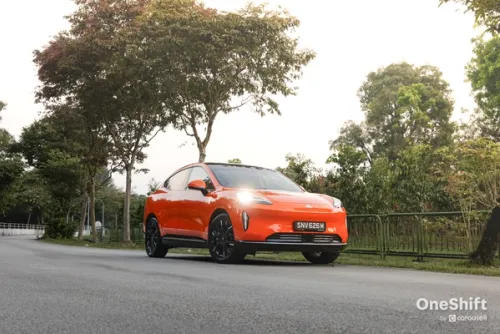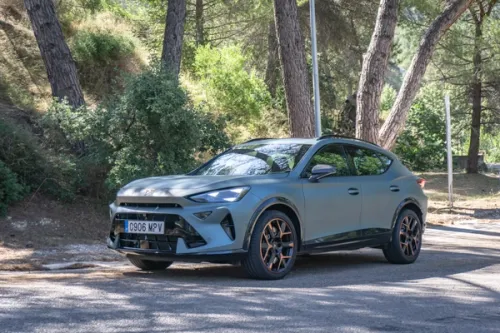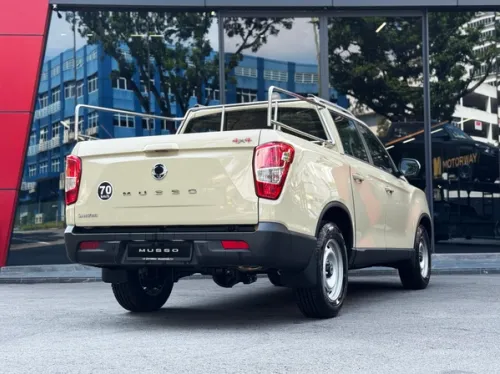Local News: Audi R8 4.2 Spyder is Here
The Audi R8 4.2 Spyder with its V8 engine produces 430 bhp and launches the open-top two-seater to 100km/h in 4.8 seconds.


Audi has added another model to its R8 lineup in Singapore: the R8 Spyder 4.2-litre FSI produces 430 bhp and launches the open-top two-seater to 100 km/h in 4.8 seconds. The V8 engine is mated to the R tronic sequential manual gearbox; quattro permanent all-wheel drive is standard.
The open high-performance sports car is a favourite worldwide, boasting recent successes including class victories in the “Auto Trophy” from Auto Zeitung and being voted among “The Best Cars of 2011” by the readers of auto motor und sport magazine. The latest version of the iconic sports car continues the phenomenon that started with the R8 coupe in both 4.2-litre and 5.2-litre guise as well as the R8 Spyder 5.2 launched in Singapore late last year.
The Audi R8 Spyder 4.2 FSI quattro is capable of a top speed of 300 km/h, and comes standard with the R tronic, a highly efficient sequential six-speed transmission. Shift commands are transmitted electrically; a hydraulic system changes the gears and manages the clutch. The R tronic offers both an automatic and a manual mode, both of which allows the driver to choose between two shift programs.
In manual mode, the driver changes gears using the joystick on the centre tunnel or with the paddles on the steering wheel. At high load and engine speed, gear changes take less than a tenth of a second. The Launch Control program ensures an optimal start, as it controls the engine speed and the engagement of the clutch to accelerate the open-top two-seater with the ideal wheel slip.
The quattro permanent all-wheel drive delivers the engine’s power to all four wheels. Together with the locking differential on the rear axle, it provides significantly greater traction, stability, cornering speed and precision. The four powered wheels seem to claw into the asphalt at the exit of the corner, and the driver can get back on the throttle sooner than in a car with rear-wheel drive.
Along with the mid-engine layout, the quattro all-wheel drive system in the R8 Spyder is specially designed with a strong rear bias. The transmission, which is mounted behind the longitudinally installed V8, has an auxiliary drive for a cardan shaft running past the engine to the front.
A viscous coupling distributes the torque at the front axle. During normal driving, it sends roughly 15 per cent of the torque to the front wheels and 85 per cent to the rear wheels. If the rear wheels begin to slip, an additional 15 per cent is quickly sent to the front. A locking differential at the rear axle further improves dynamics. It provides up to 25 per cent lockup when accelerating and up to 45 per cent when coasting. If a wheel on one of the axles should slip, it is braked by the EDS electronic locking differential.
The free-breathing 4.2 FSI is a high-performance engine that can be found in racing. It delivers an experience that enthrals all senses – spontaneous, voracious throttle response, easy revving, hefty torque, prodigious power and sonorous music.
At Audi, dynamics also always mean efficiency. The R8 Spyder 4.2 FSI quattro with the R tronic consumes on average 13.5 litres of fuel per 100 km; fuel consumption with the manual transmission is 14.9 litres per 100 km. A recuperation system that recovers energy during braking comes as standard. The forced oil pump of the dry sump lubrication system features various suction and discharge stages for load- dependent operation.
The 4.2 FSI, which is also used in this form in the R8 Coupé, produces 430 bhp from a displacement of 4,163 cc – 103.2 bhp per litre. At the nominal engine speed of 7,900 rpm, the long-stroke engine’s eight pistons travel 24.1 metres per second. The electronic rev limiter kicks in at 8,250 rpm. The V8 delivers 430 Nm of torque to the crankshaft between 4,500 and 6,000 rpm, with at least 90 per cent of peak torque available between 3,500 and 7,500 rpm.
The compact V8, which is hand-assembled at the engine factory in Györ, Hungary, has the classic cylinder angle of 90 degrees and weighs just 216 kilograms. Its crankcase is made of an aluminium-silicon alloy using the low-pressure die casting method, which ensures particular homogeneity. The high silicon content makes the cylinder barrels extremely resistant to wear.
The R8 Spyder 4.2 FSI quattro is 4.435 metres long, 1.904 metres wide and 1.244 metres tall – it has a wide, hunkered-down stance on the road as if ready to pounce. Its dynamic proportions, the sculpted design and the passenger cell situated far to the front with the flat windshield visually underscores the mid-engine concept. The large vertical air intakes are athletically sculpted out of the flanks, and the shadow contour of the rear end forms a powerful wave above the wheels. Its lightweight cloth top opens and closes fully automatically; several body parts are made of a carbon fibre composite material.
An elliptical crease encircles the long back and provides visual structure. When viewed from above, it combines the passenger compartment and the engine into a single unit. Two arched cowls in glistening silver give the back a powerful profile. They taper from the bulkhead to the spoiler lip, and each includes six integrated air vents. Another wide discharge vent is located between the cowls.
Numerous other touches – from the single-frame grille painted in high-gloss black to the exposed gas cap of solid aluminium – document the Audi designers’ great attention to detail.
The headlights are technical works of art – this applies to the standard xenon plus units and even more so for the optional LED headlights, which use light-emitting diodes for all lighting functions. Their reflectors resemble open mussel shells, and the daytime running lights appear to be a homogeneous strip extending along the lower edge of the headlight. One of Audi’s greatest innovations, the LED light, has a colour temperature very similar to that of daylight, making it easier on the eyes when driving at night. It also impresses with a long service life and extremely low energy consumption.
The rear of the R8 Spyder 4.2 FSI quattro features LED tail lights as standard equipment. The exhaust system terminates in dual tailpipes on both the left and the right. The rear spoiler, which extends automatically at 100 km/h, and the fully lined underbody generate a downforce that presses the high-performance sports car firmly to the road. With a drag coefficient of 0.36 and the small front surface area of 1.99 square metres, the two-seater still glides easily through the wind. Audi has applied a lot of the knowledge gleaned in motorsport to the flow of air around and through the body.
The R8 4.2 FSI quattro is now available in Singapore at S$599,073. (inclusive of COE).
Credits: wilswong


Get the Best Price for your used car
from 500+ dealers in 24 hours

- Convenient and Hassle-Free
- Consumer Protection
Transparent Process
With No Obligation








